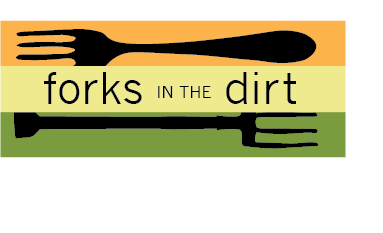
I started growing leeks about 8 years ago and now can’t imagine the end of a harvest season without them!
Plus—leek powder is a must in my spice rack now (more on that later)!
Leeks are like the cosmopolitan older cousin to onions—graceful lines compared to round and squat stature. They have a more sophisticated flavor; and yet somehow easier to grow for me!

Growing Leeks
Leeks are easy to start from seed, though you do need to give them good lead time, about 10-12 weeks prior to transplanting, just like other onions. Most leeks need between 110-150 days of growth to fully mature. For me in Minnesota, on the edge of Zones 4b-5a, this means I start seeds under lights by mid-February. I grow these in 5” deep pots.
As they grow it is good practice to trim the tops, I trim to 3 inches or so. This trimming will help them add more layers and get ‘fatter’ stalks. This also helps them not flop over when you transplant. The same trimming information applies with growing onions. So, bonus, you get to enjoy little ‘leek microgreen’ nibbles as they grow indoors.

I’ll be trying a little experiment with starting some inside vs. winter sowing some and keeping track of the harvests as well, as I’m always looking for ways to make things easier!
My Favorite Varieties:
Chinook
-Earliest and best disease resistance.
King Richard
-Largest (by a hair over Chinook).
Blue Solaise
-Heirloom, Good flavor but short and squat.

You can transplant leeks out a little earlier than onions as they’re not as affected by cold temps, usually by early May. Leeks (like all onions) prefer the sunniest spots in your garden, at least 8-10. They also do best in nitrogen rich, well-draining soils. So if you have a dense clay type of soil you may want to grow these in raised beds. I’ll often soak the seedlings in water to loosen the roots (they have been growing in these deep pots for almost 3 months after all).
And you can trim the tops at transplanting as well, making it easier for them to establish without tipping over. I add a little slow-release fertilizer (my blend is in our book) as I transplant, or you could just add a side dressing of well-rotted compost. I also mulch with a light layer of straw right. This helps keep dirt out from between the tight layers. They slowly grow throughout the season and are such a perfect late season treat to harvest. Leeks are cold tolerant down to the 10s, though harvesting in the 20s F is usually recommended.
Growing Leeks From Saved Seed

If you want to experiment with growing your own leek seed, there’s a trick at harvest time. Cut the leek an inch or so above the soil level and leave the roots intact. This practice has proven to regrow plants the next year for me—three years in a row. This works because leeks, like all onions, are biennials and will seed after a second year of growing. The leeks themselves tend to be tough, but the seeds are worth it!
*Also, at harvest time there’s something SO satisfying about peeling off those few outer tough layers to reveal the fresh white-green stalks underneath!

Cooking with Leeks
I use leeks in place of onions for most things when I bring in the main harvest. I think they pair so well with most of our fall favorites, like turkey stuffing, potato leek soup, and any squash recipes.
Leeks are high in vitamin A (one cup offers 30% of your daily requirement). They’re a decent source of vitamin C, vitamin K, and vitamin B6, as well as the minerals iron and manganese.
Leeks pair especially well with:

- Eggs
– I’m going to say it, leeks pair better with eggs than onions! - Potatoes
– Caramelized leeks > caramelized onions. - Squash
– Something about the mild sweetness in leeks lets squash really shine. - Carrots
– Pan roasting sliced carrots + leeks is scrumptious. - Soups
– Adds an amazing depth to broth. Go ahead and add in onions, garlic, and leeks and see how happy that broth makes you.
Leek Powder

I love being able to grow a plant for multiple years, to get to ‘know’ it and how it plays best with your family. This idea came to me after recipe after recipe told me to toss the dark green tops. But as a gardener, I kept thinking, I grew that—and that gorgeous dark green must be good for something… and it was, and LEEK POWDER was born!
To make the most out of these gorgeous plants, first, I remove any tough and dried outer leaf tops. Then I chop the leek down to where I would normally use it in a recipe, because the green parts are more fibrous and tend not to cook down very well. This gives me a good few inches of green leeks to work with from every plant. Chop the green tops into thin strips.

Dehydrate for at least a day at 95 F; leeks are over 80% water after all. Once crispy dry, I toss into my blender and pulverize into a powder that is so packed with flavor you’ll wonder how you ever survived without it.
Keeping the powder in an airtight container out of direct light is key to being able to use it all year long.
SO, have I convinced you to give growing leeks a try this year?
I’m currently getting my seed starting area set to start these earliest of seeds and cannot wait!
Dig In,
Michelle
















I'd love to hear your thoughts!